Imagine you’re at a small gathering, music playing, laughter floating in the air—and suddenly the melody cuts out. You’d expect a moment of silence, right? Well, many dogs don’t.
A study in ScienceDirect found that dogs are significantly more likely to bark when music stops. What this means is that the sudden silence can spark an alert response—almost like a mini alarm going off.
Dogs are wired for sound. According to the American Kennel Club (AKC), they can detect frequencies up to 65,000 Hz—more than three times what we can hear—making them incredibly sensitive to audio cues. That kind of hearing isn’t just for spotting a mouse—it also means they notice when a tune abruptly ends.
Picture a dog tilting its head in confusion, perhaps even letting out a bark as the beat drops off. That blend of curiosity and protectiveness makes for an endearing scene—and it’s rooted in their biology.
Dog Breeds that Bark when Music Stops Playing
Here are the 10 dogs that bark when the noise stops:
1. Border Collie
Border Collies are in a league of their own when it comes to brains, drive, and agility. Originally bred in the hills of Great Britain, they’re working dogs with sharp instincts, especially when it comes to herding.
These dogs don’t just bark—they talk, using a lively mix of sounds, from quick yips to purposeful howls, especially when they’re in the zone.
Incredibly Intelligent: Border Collies are often dubbed the world’s smartest dogs—a title earned by Chaser, who could respond to over 1,000 words. This breed doesn’t just follow commands; it understands them.
Purposeful Barking: Unlike many dogs that bark out of habit or anxiety, Border Collies bark with intention. Whether to alert, direct, or communicate, their vocalizations are always part of a bigger plan.
Energetic and Vocal: When these dogs start barking, it’s often tied to their work drive. Their high energy pairs with a sharp alertness, making them exceptional herders and excellent watchdogs.
Escape Artists by Nature: Due to their cleverness and high energy, they’re known to catch on to patterns quickly, which includes figuring out how to open gates or slip past fences.
Adaptable Coats for All Climates: With a double-layered coat, they handle noise, wind, and rain with ease—perfect for active households in varying climates.
The “Herding Eye”: This signature stare helps them control flocks and even get the attention of other people when needed. It’s not aggressive, just intense—like everything about this breed.
Natural Communicators: Their personality leans heavily on interaction. They’ll bark, or give you that look, when they want something. They aren’t just pets—they’re talkative, thinking with a plan.
2. Jack Russel Terrier
These dogs are energetic, fearless, and always on high alert. Originally bred for hunting, they were trained to chase foxes—often relying on their sharp bark to catch the animal’s attention and flush it from its hiding spot. That intense instinct is still very much alive.
When a Jack Russell starts barking, it’s not just noise—it’s drive, curiosity, and often, pent-up energy all rolled into one. They’re also incredibly talkative and will often communicate with you when they’re bored, excited, or even frustrated.
Sky-High Jumpers: These dogs can jump up to five times their height.
Fox-Hunting Legacy: Their loud bark once served a practical role—flushing foxes from their dens.
Natural Diggers: A Jack Russell doesn’t need much of a reason to start turning your yard into a minefield. It’s in their nature to dig—something passed down from their tracking roots.
High Energy = High Volume: Without a routine packed with mental tasks and plenty of room, these dogs are prone to excessive barking and even destructive behavior.
Emotionally Vocal: These terriers often express anxiety or boredom through a mix of whining, growling, and barking. They’re sensitive to changes and tend to wear their feelings on their furry sleeves.
Thrives on Stimulation: They aren’t meant for quiet, low-energy households. They crave activity, interaction, and a bit of controlled chaos to stay calm and happy.
3. Beagle
Beagles don’t just bark—they sing. As pack animals with deep-rooted tracking instincts, they’re wired to be vocal. Like any true hound, they use their voice to signal, communicate, and alert. Whether it’s a high-pitched bark, a classic bay, or a drawn-out howl.
Even though they’re curled up on the couch instead of chasing rabbits, those habits stick. If they hear something—or even smell something—they’ll probably let you know, and the neighborhood too.
A Nose That Never Quits: They have roughly 220 million scent receptors, which explains their nonstop sniffing. This makes them champions at tracking-based tasks.
Full Vocal Range: This breed doesn’t just bark. They bay, howl—each with a different meaning. It’s part of what makes them feel so expressive.
Distinctive Tail Trait: Most Beagles have a white tip on their tail. This wasn’t by accident—it helps owners spot them in tall grass when they’re nose-down on the trail.
Official Working Dogs: Beagles work in airport security and agriculture enforcement (like the USDA’s “Beagle Brigade”), proving they’re more than just cute faces with adorable ears.
Barking with Purpose: Their howl and bark carry across long distances. It’s not just loud—it’s a constant, attention-grabbing sound that’s built for coordination during group tracking.
Pack-Minded Personality: Beagles are at their best with family. They don’t enjoy being left alone, and their whining and barking will ramp up when they feel isolated.
4. Smooth Fox Terrier
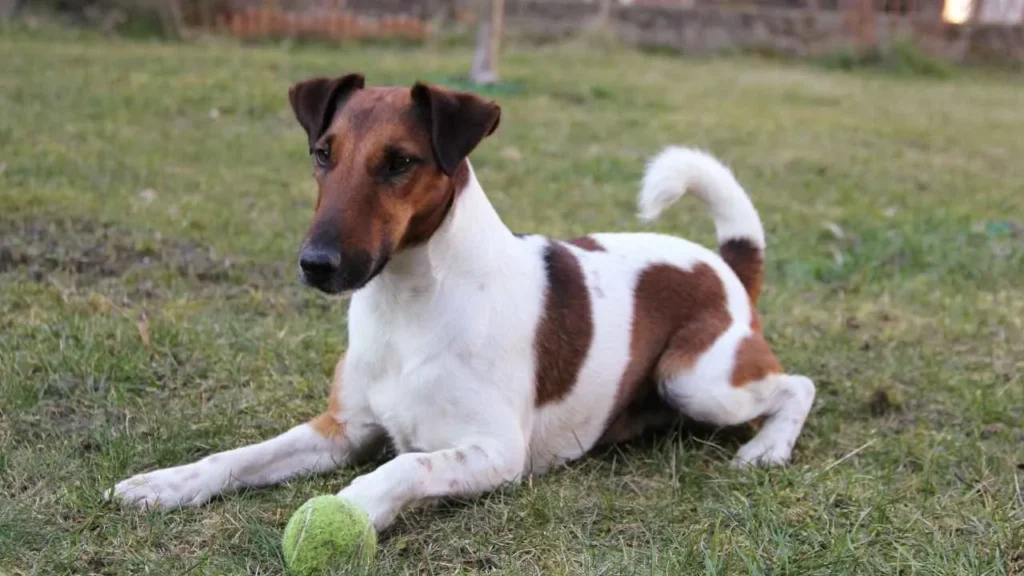
The Smooth Fox Terrier isn’t just another small, energetic, loud breed—it’s a piece of canine history. Bred to flush foxes, these canines are sharp, agile. Barking is part of their DNA. It’s how they alerted, communicated during a chase, or demanded attention when it mattered.
Even now, that instinct to bark hasn’t faded, which can make them a challenge in quiet environments. But with the right training, structure, and plenty of fun, the Smooth Fox Terrier channels all that noise and brilliance into a fun, clever companion.
Bred for Barking: These dogs weren’t just tolerated for being loud—they were intentionally bred that way. Their loudest bark helped drive foxes out from underground and kept them connected to their owners.
Fearless and Fiery: Without proper training, they may develop “Little Dog Syndrome”—showing big energy toward much larger dogs, even cars, often barking out of sheer confidence.
Independent Thinkers: Smooth Fox Terriers were bred to make decisions on the fly. That independence now shows up in clever, sometimes sneaky behavior that keeps people on their toes.
Sharp Senses: Their keen eyesight and strong scenting ability give them incredible focus. They’re often sensitive to sounds, smells, and movement long before you are.
White for a Reason: White coats weren’t just stylish—they were practical. A white dog was less likely to be mistaken for the target.
Energy + Voice = Not Ideal for Apartments: While adaptable, their tendency to bark and need for space make them a better fit for homes with room to roam.
Needs More Than a Walk: A stroll won’t cut it. These playful dogs need real activity and mental challenges to stay calm and content—or else, you’ll hear about it.
5. Chihuahua

Chihuahuas may be the smallest dog breed on the planet, but their voices are anything but small. Known for their rapid-fire yips and piercing pitch, these little loud dogs have a bark that can throw you off guard. What they lack in size, they make up for in personality.
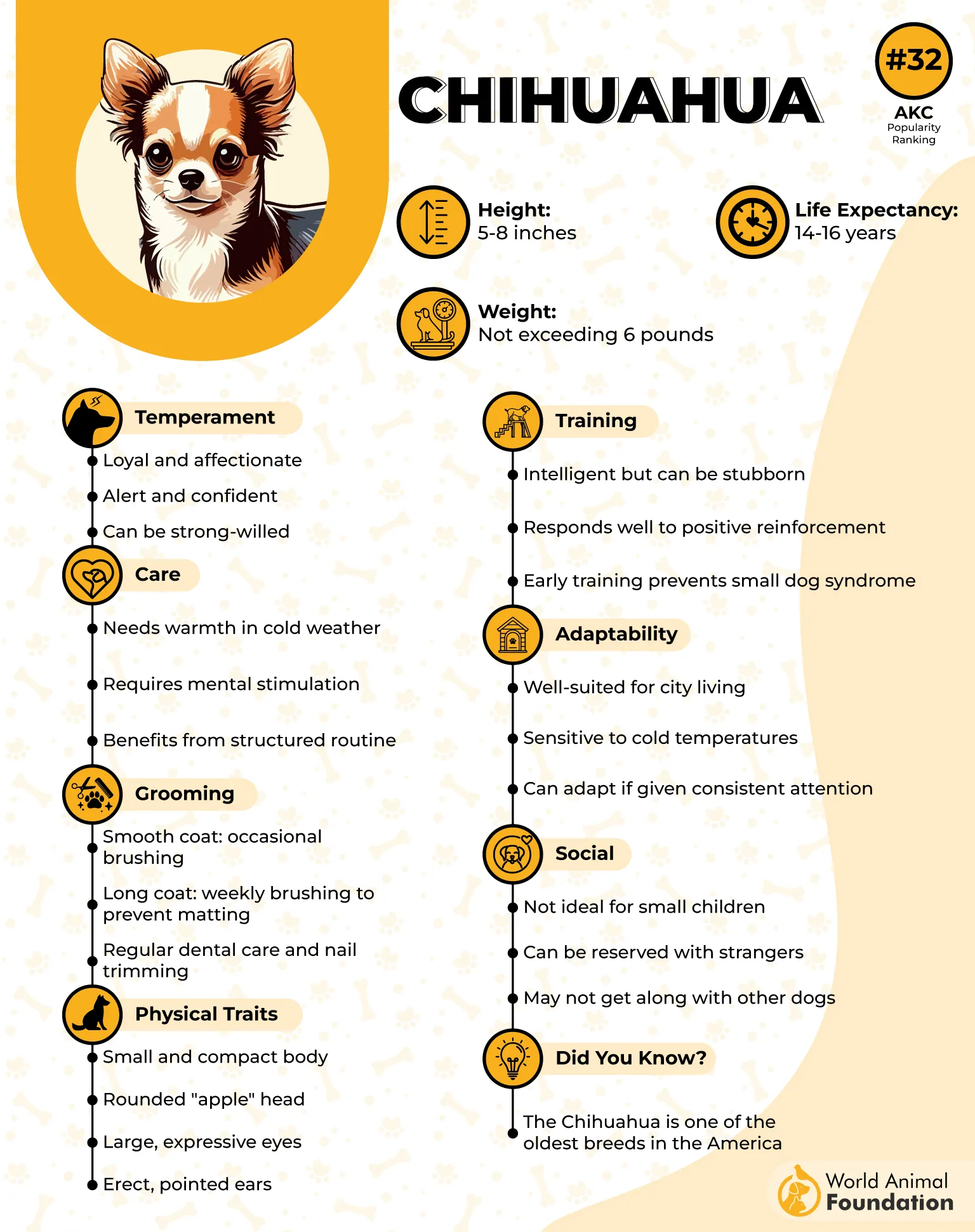
They’re bold, sassy, and often suspicious of others, which makes them surprisingly aware dogs. Their speaking style often reflects their mood. But if not taught early, they can easily shift from charming to downright yappy.
Big Dog Energy: Chihuahuas act like they own the room. They often bark at cars, people, or even other dogs twice their size, showing off their fearless attitude.
Loyal to the Core: They attach deeply to their owners and can become protective, especially in unfamiliar settings. That bark is their way of keeping you “safe.”
Smart but Sensitive: These pups learn fast, but they also respond emotionally. Teaching with patience and positive rewards works best to manage their natural sass.
Style in Every Strand: With both long-haired and smooth-coated varieties, they offer a lot of visual variety for such a tiny pet. Grooming needs vary by coat type.
6. Miniature Schnauzer
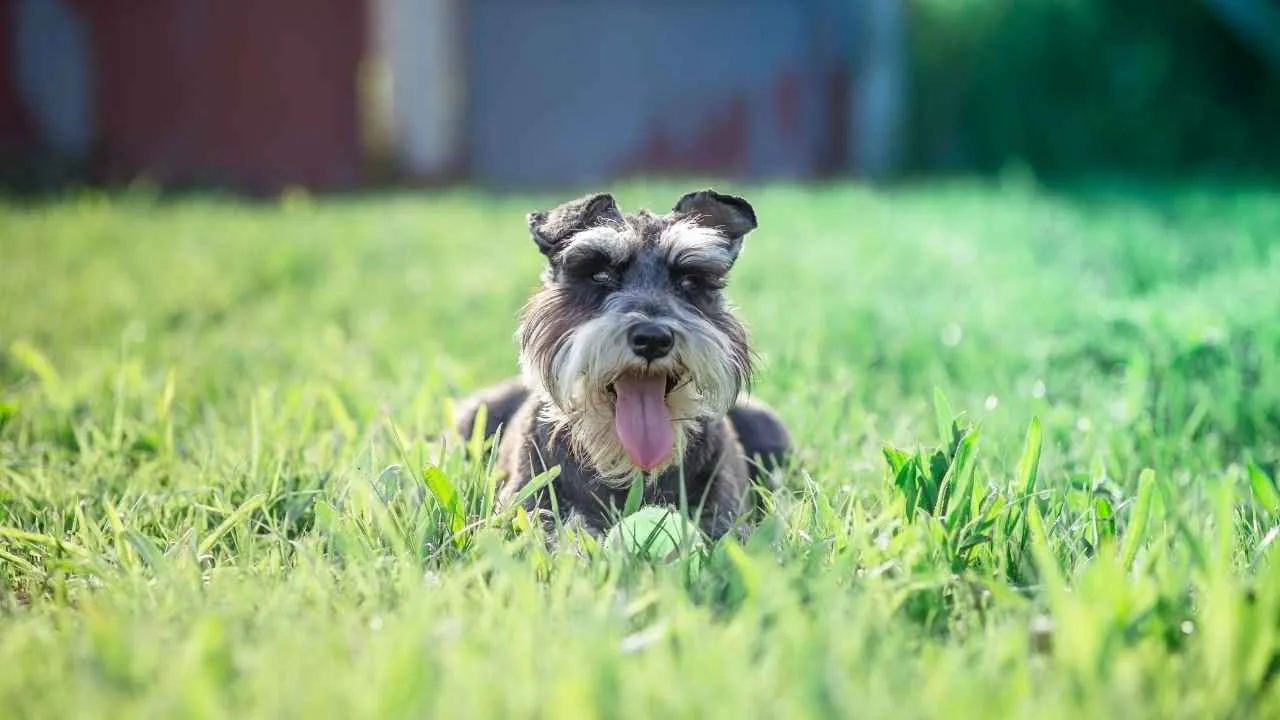
Don’t let the classy beard fool you—the Miniature Schnauzer is a vigilant, high-energy, loud dog that takes guarding the house seriously. These small yet bold pups are known for their piercing bark, which they’re quick to use the second someone steps near your door.
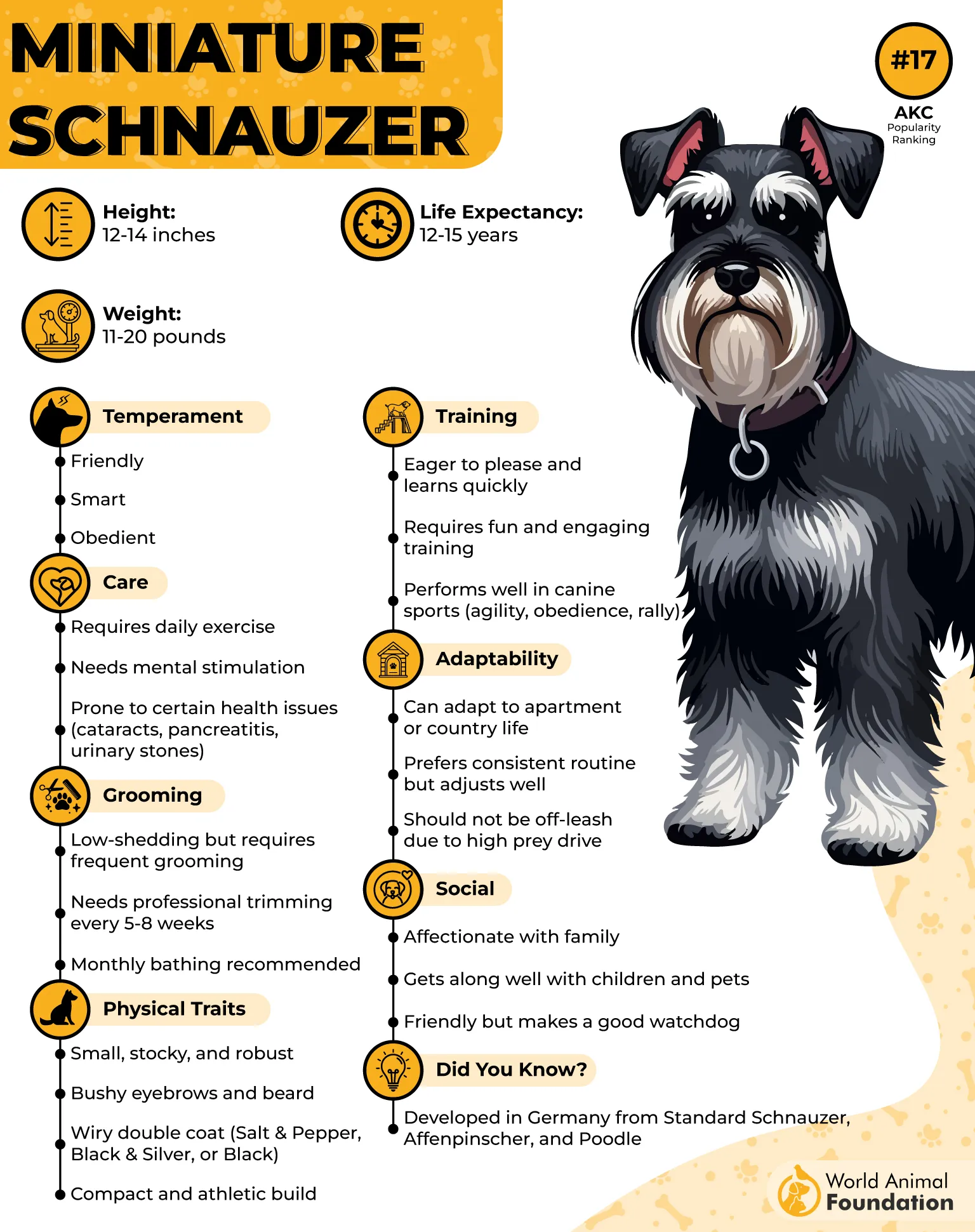
Bred in Germany as farm workers, they developed a natural tendency to alert their humans with sharp, consistent vocalizations. They’re also one of the most trainable small breeds, which makes curbing unnecessary barking entirely possible with some patience and consistency.
Farm Dog Origins: Originally bred to control rodent populations, they have a strong prey drive and are always aware, making them great at noticing movement or sounds others might miss.
Iconic Facial Hair: The name “Schnauzer” comes from “schnauze,” the German word for snout—a nod to their dramatic beard and expressive eyebrows that give them a wise, even intense look.
Low-Shedding, High-Maintenance Coat: Their wiry double coat doesn’t shed much but needs routine grooming to stay neat. It’s ideal for people who love dogs but not noise-level fur cleanup.
Bark With a Purpose: While they are prone to barking, it’s rarely random. Whether they’re reacting to a stranger or protecting their space, their voice is an extension of their loyalty.
Confident, Not Aggressive: They come off intense, but a well-socialized Mini Schnauzer is also gentle, affectionate, and gets along well with kids and other pets.
7. Dachshund
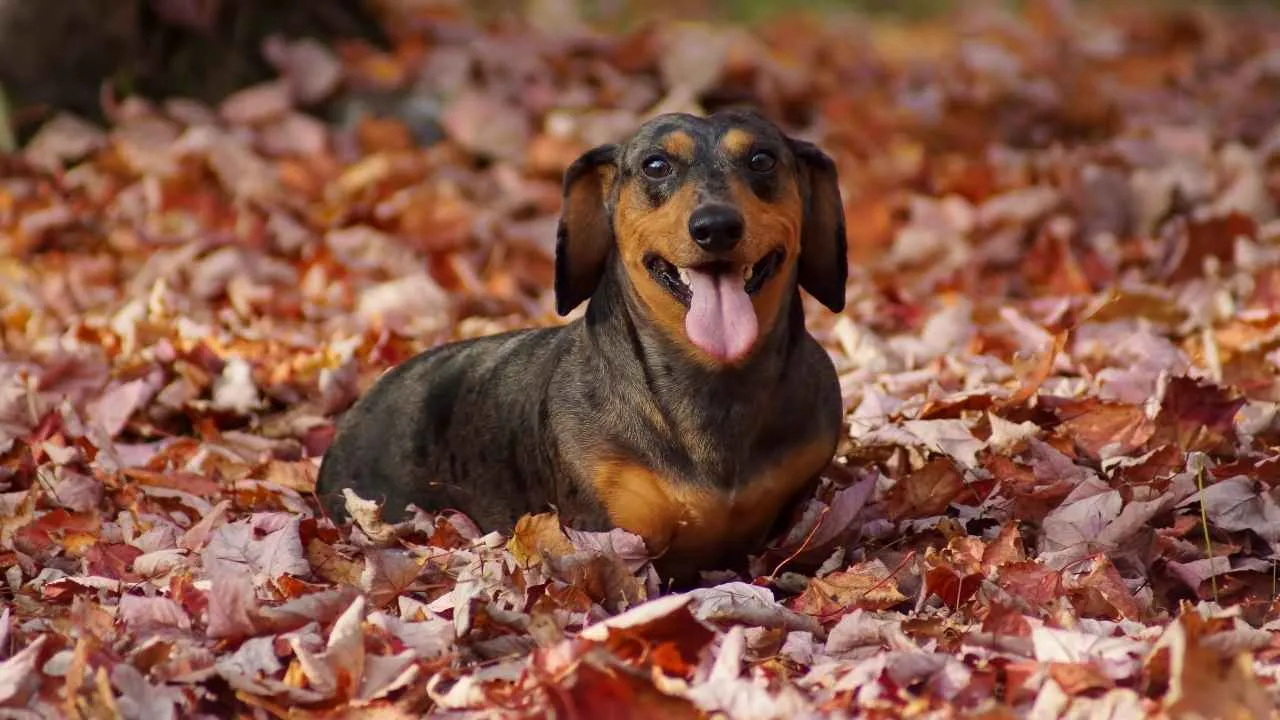
With a bark as distinct as their shape, Dachshunds are a loud dog. Originally bred in Germany for badgers, these little dogs come with a built-in loud boldness that’s impossible to ignore. Their dog’s bark has a quirky charm—described by many as a cross between a yelp and a growl.
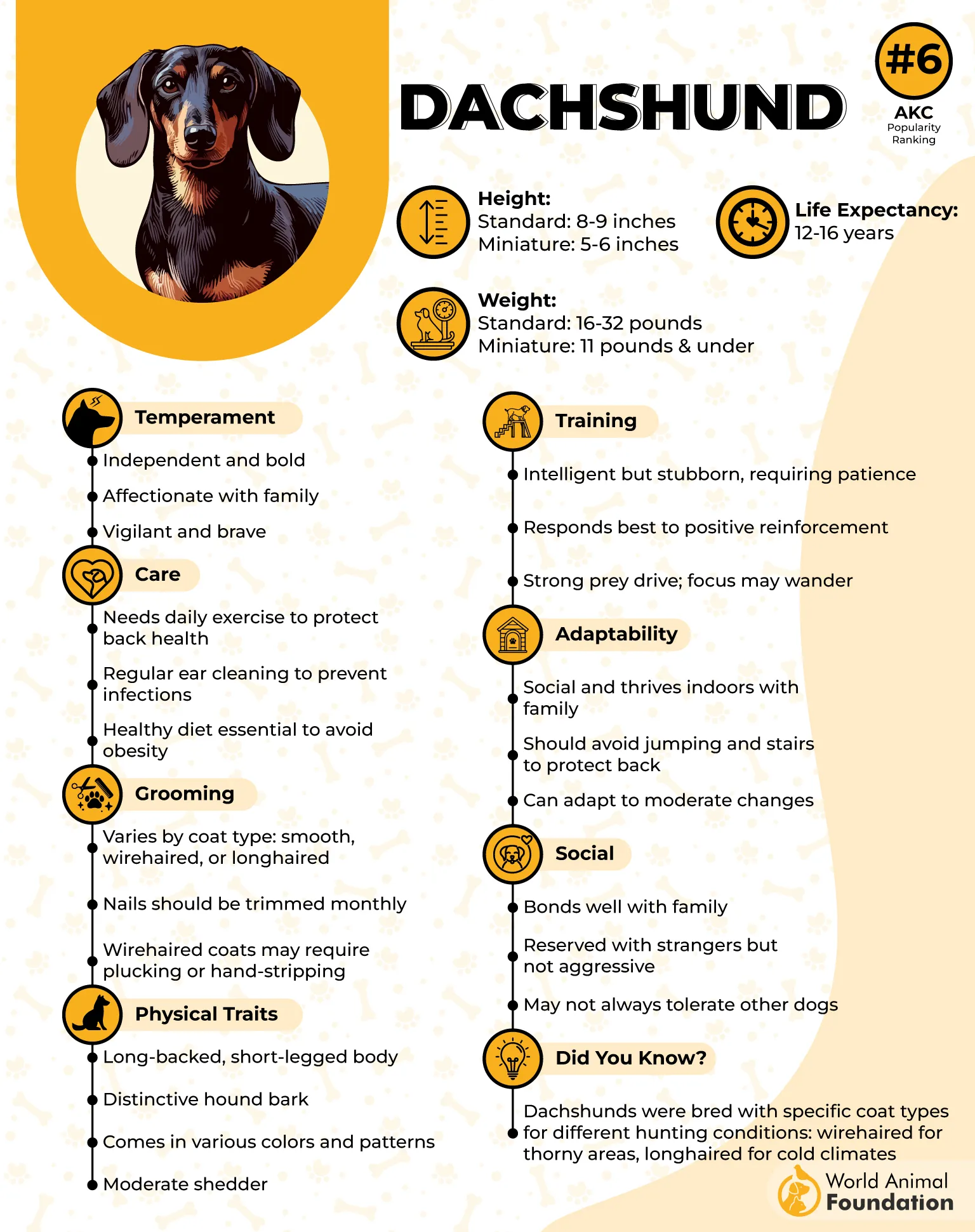
It’s loud, persistent, and often startling, especially coming from such a short-legged body. Dachshunds are known to use their voices to express themselves fully and often. That feisty spirit is part of what makes them so lovable—and also what can make them challenging for neighbors.
Squeaky but Strong: Dachshunds have a bark that’s oddly deep and shrill at the same time, carrying more power than you’d expect.
Long Ears, Big Function: Their iconic floppy ears don’t just add charm—they help catch scent particles and shield the ear canals from debris while digging.
Always on watch: These dogs are fiercely loyal to their house and are family dogs, making them reliable (if noisy) watchdogs.
Big Personalities in Small Packages: They’re bold, clever, and unafraid to challenge other breeds, often letting out a warning bark before charging in.
8. Australian Shepherd
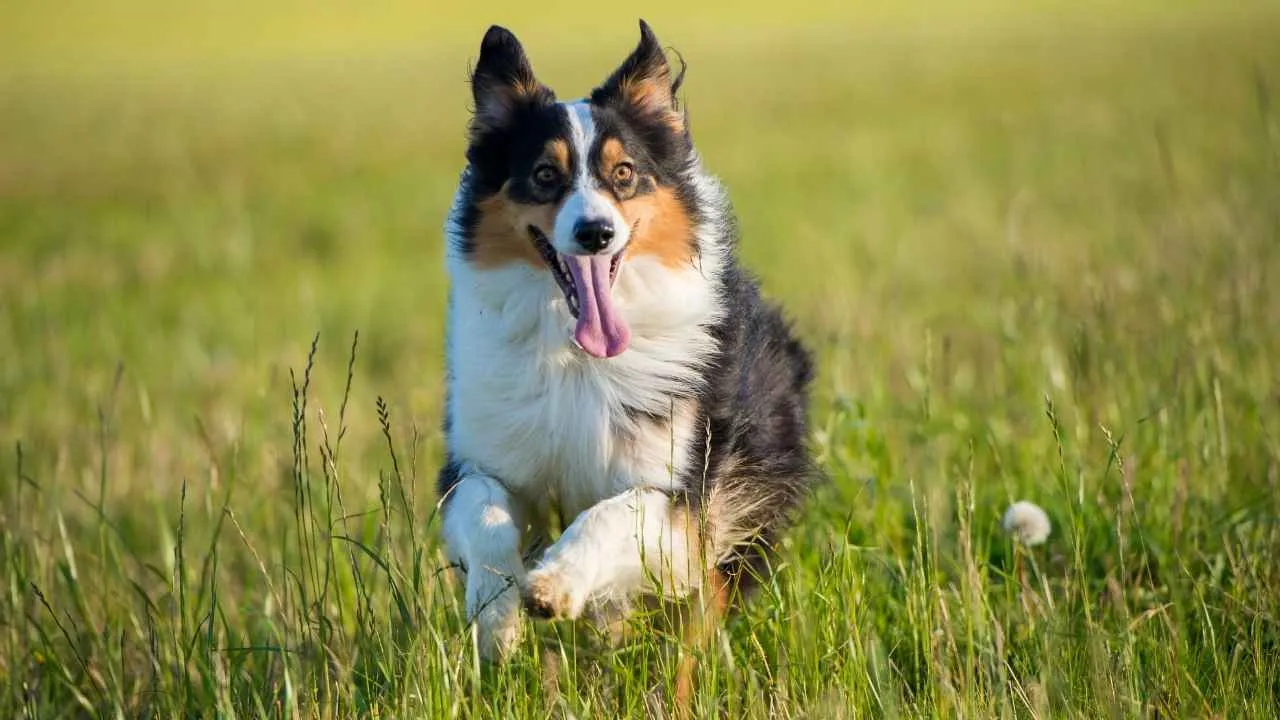
Australian Shepherds command. Their voice is quick, sharp, and deliberate, shaped by a rooted instinct to manage, guide, and protect. Originally bred as herding dogs, their dog bark was a tool—used to direct livestock, signal changes, or react to sudden movement.
But they’re not just workaholics—they’re also expressive companions who are talking in high-energy moments.
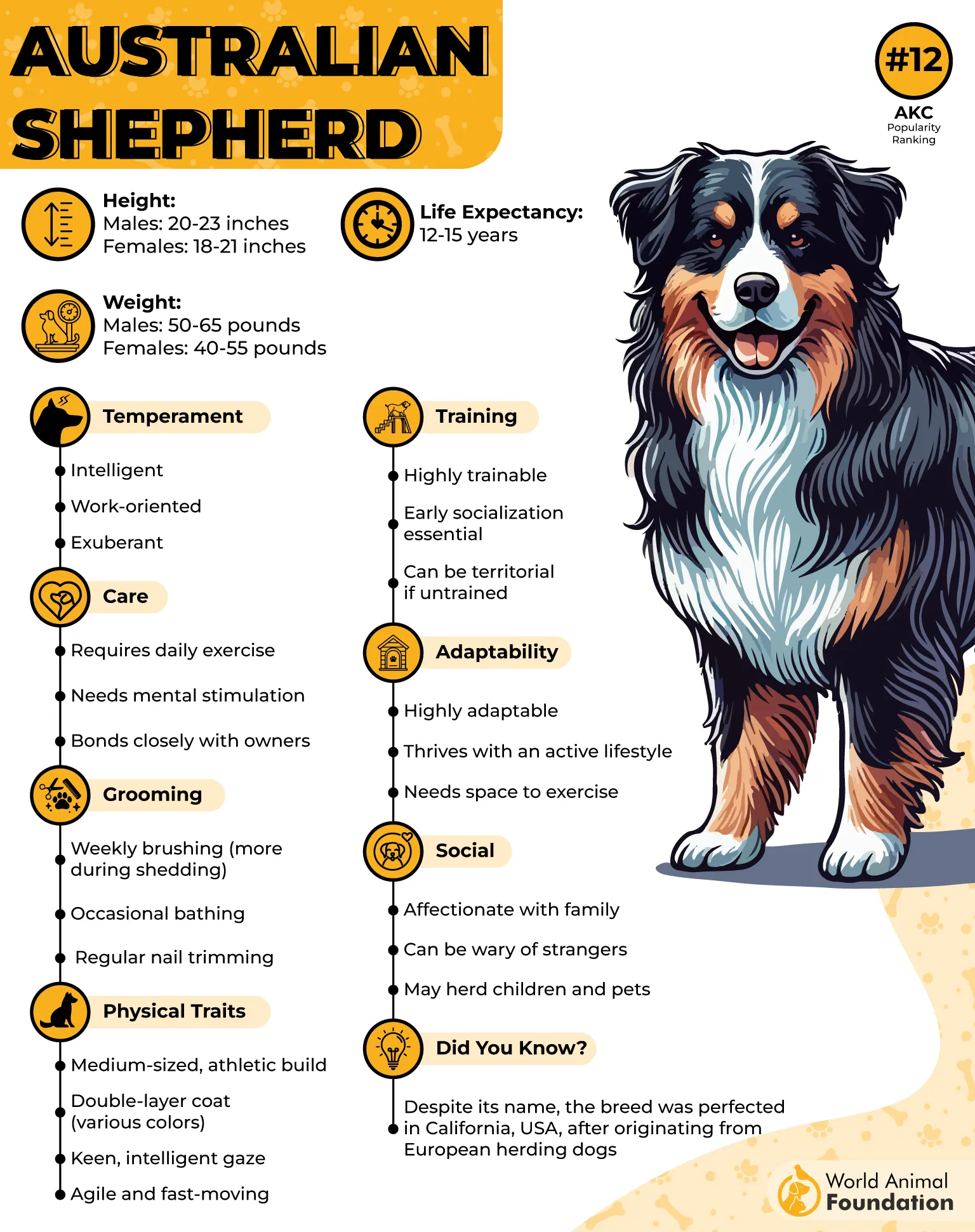
Sacred “Ghost Eye” Dogs: Native American tribes respected Aussies for their often piercing blue or mismatched eyes, calling them “ghost eye” dogs due to their otherworldly gaze and spiritual presence.
Born Rodeo Stars: Their agility and responsiveness made them crowd favorites in American rodeo circuits, where they wowed audiences with sharp turns and lightning-quick instincts.
Natural Multitaskers: Beyond the farm, Aussies thrive as therapy dogs, search-and-rescue workers, and top-tier athletes in dog sports. Their personality shines most when they’re engaged.
Merle Magic: Many Australian Shepherds sport striking merle coats, with swirling patterns that give them an unmistakable look and often come paired with vibrant eye color contrasts.
No Tail, No Problem: Some Aussies are born with short or bobbed tails, which historically helped reduce injury while working in rough terrain.
9. Bloodhound
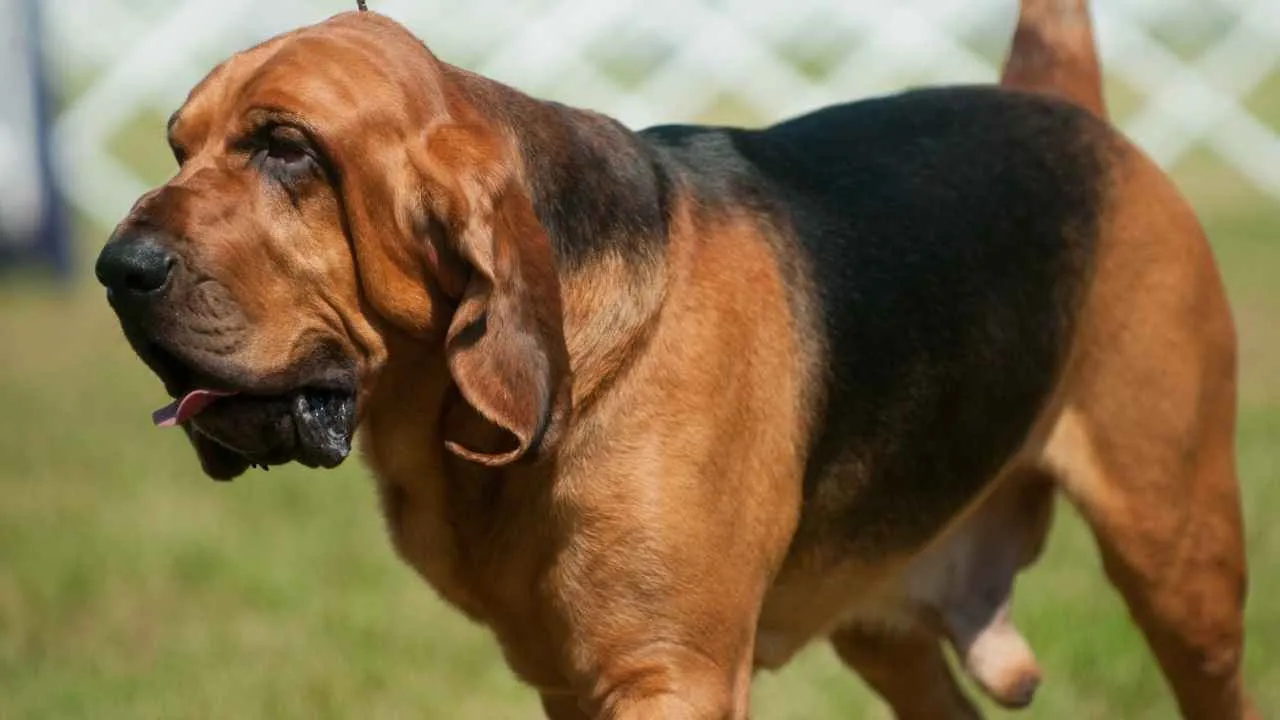
A Bloodhound’s voice is deep, resonant, and unmistakable, not the loudest bark—less about volume and more about impact. That said, they’re surprisingly selective barkers.
Unlike some loud dogs that bark at every passing sound, Bloodhounds tend to raise their voice only when something’s worth noting: a strange scent, a change in routine, or sheer boredom. It’s the hound in them — attuned to patterns, noticing shifts, and always ready to respond with a bark.
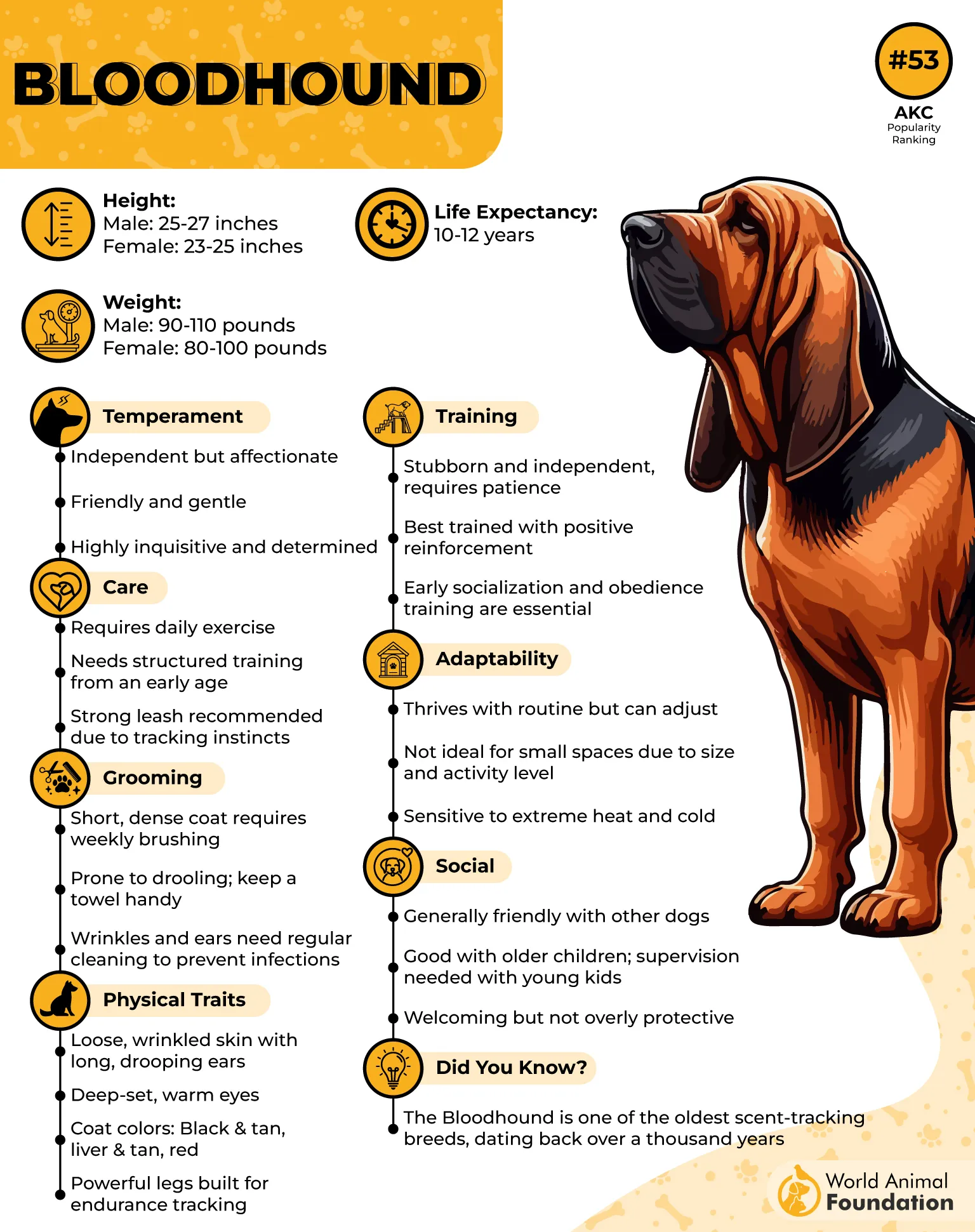
Scent-Tracking Powerhouse: Bloodhounds boast up to 300 million scent receptors. They are the ultimate scent hound, built to follow a trail for miles with unwavering focus.
Old Trail Experts: These dogs can follow a scent that’s more than 12 days old, making them invaluable in search-and-rescue and criminal investigations.
Signature Look, Functional Design: Their droopy ears, wrinkled face, and loose jowls aren’t just charming—they help trap scent particles to their nose.
Surprisingly Long Lifespan: Bloodhounds tend to live over a decade, often reaching into their double digits.
Gentle Over Guarded: Despite their intimidating bark and stature, Bloodhounds are too friendly to be true protective dogs. They’ll greet others before they scare them.
10. Siberian Husky
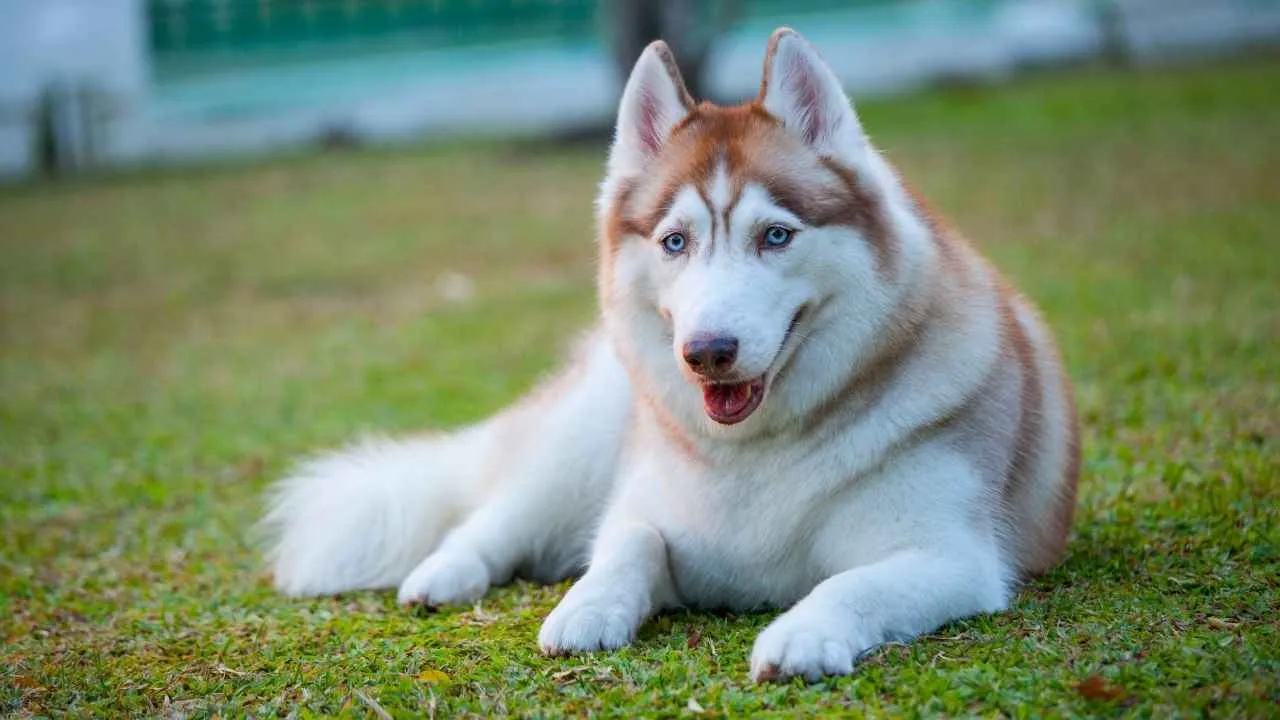
Huskies don’t rely heavily on barking; they’re known for their howl. Sure, they’ll bark when they’re triggered by other dogs or trying to get your attention, but their default setting is more about howling, vocalizing, and even speaking in their dramatic way.
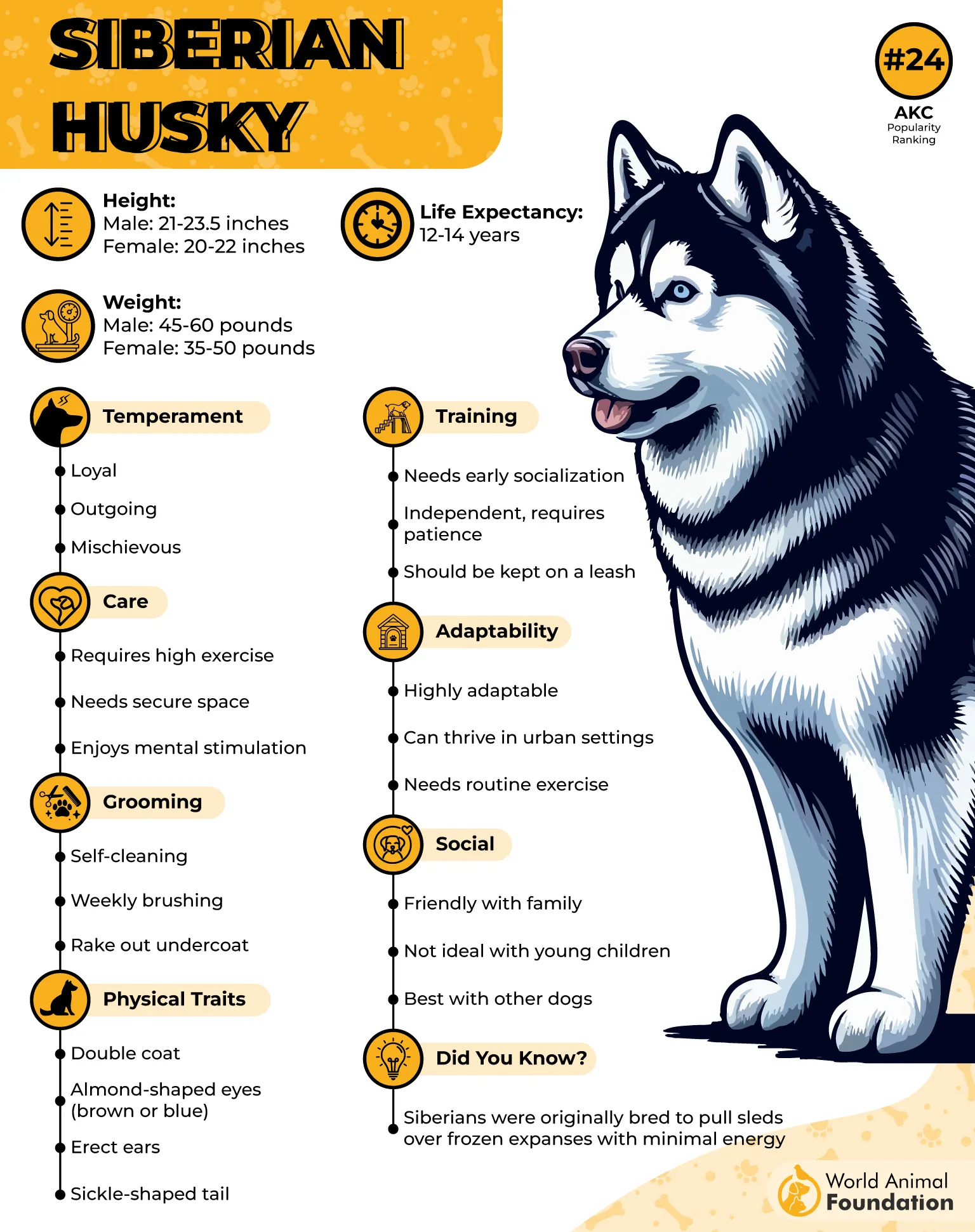
This ancient breed wasn’t just built for work—it was built for expression. Left alone too long, a bored Husky will put on a concert. But when given space, structure, and plenty of exercise, their wild energy becomes an amazing part of what makes them so captivating.
Born to Howl: Huskies use howling as their primary form of communication. It’s a throwback to their days in packs, where sound travelled far across snowy landscapes.
Ancient Lineage: Originally bred by the Chukchi people in Siberia, they were essential for sled pulling and companionship in harsh climates, making them one of the oldest recognizable dog types.
Energy-Efficient Runners: Thanks to their elite metabolism, Huskies can run for miles on little food—a trait that made them invaluable for long treks across frozen terrain.
Mismatched Eyes & Striking Looks: Many Huskies have heterochromia—one eye blue, one brown, or even parti-colored. It’s part of what gives them their signature, almost mystical appearance.
Not Your Average Guard Dog: Despite their wolfish look, Huskies are usually too friendly with strangers to excel as guard dogs. They’d rather greet than growl.
Work First, Rest Later: They are true working dogs at heart. They thrive with structured activity like sledding, hiking, or agility—not just a quick walk around the block.
Conclusion
When the noise stops, some dogs don’t just notice it—they respond loud and clear. Whether it’s a sudden silence, a story that mimics distant sirens, a disruption to their familiar rhythm, or just plain surprise, certain dogs can’t help but speak up. These aren’t mellow loungers content with the quiet; they’re often natural hunters, aware and reactive, hardwired to notice shifts in their environment—especially auditory ones.
Understanding this behavior comes down to more than just volume. Many of these vocal dogs have hound roots. It’s about tuning into the dog’s world, where sounds have meaning, sights demand a response, and the unexpected stirs instincts. While not every dog will bark when the beat drops out, the ones that do are often bursting with personality, sensitivity, and a bright kind of knowledge. These dogs don’t just sit quietly—they’ll hound the silence with their signature bark..


